Having a good tone on the violin might seem very challenging at first and it does take some time to improve it. The good news is that you can do a lot to change your violin sound for the better!
There are a number of possible reasons for a not-so-good tone or even a scratchy sound coming from your violin. This can make it less appealing for a beginner to play, and may even be demotivating, to some extent. So in this article, I will share with you advice and tips to help you improve your tonal quality!
Read on to learn how your technique but also the quality of your violin, bow, and other accessories may help you produce a beautiful tone on your violin.
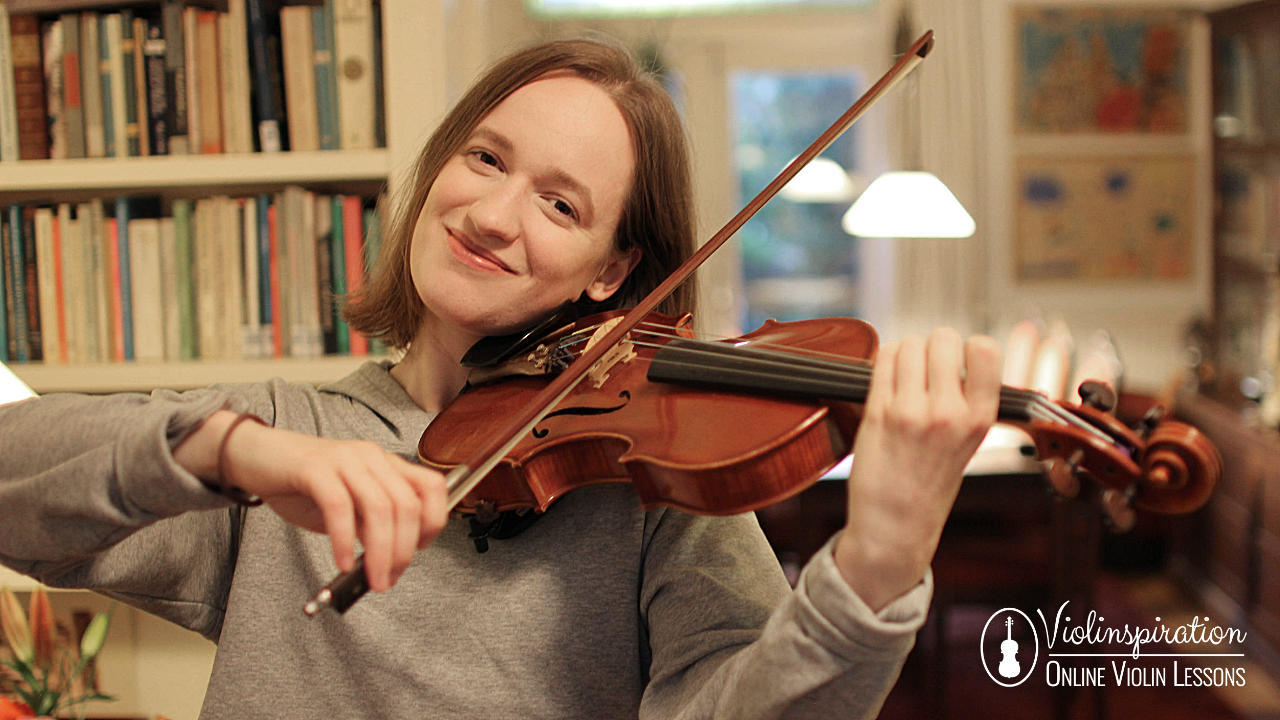
How Do You Get a Good Violin Tone?
I’ll start by providing some technique tips to address some of the most common problems you may face when your sound is not so good.
Also, these technique tips are things that trouble violinists at all levels and are common mistakes for beginners, so if you have to fix a lot of them, don’t get disappointed, it just means that you need to gain more experience in playing the violin.
Check Your Bow Pressure
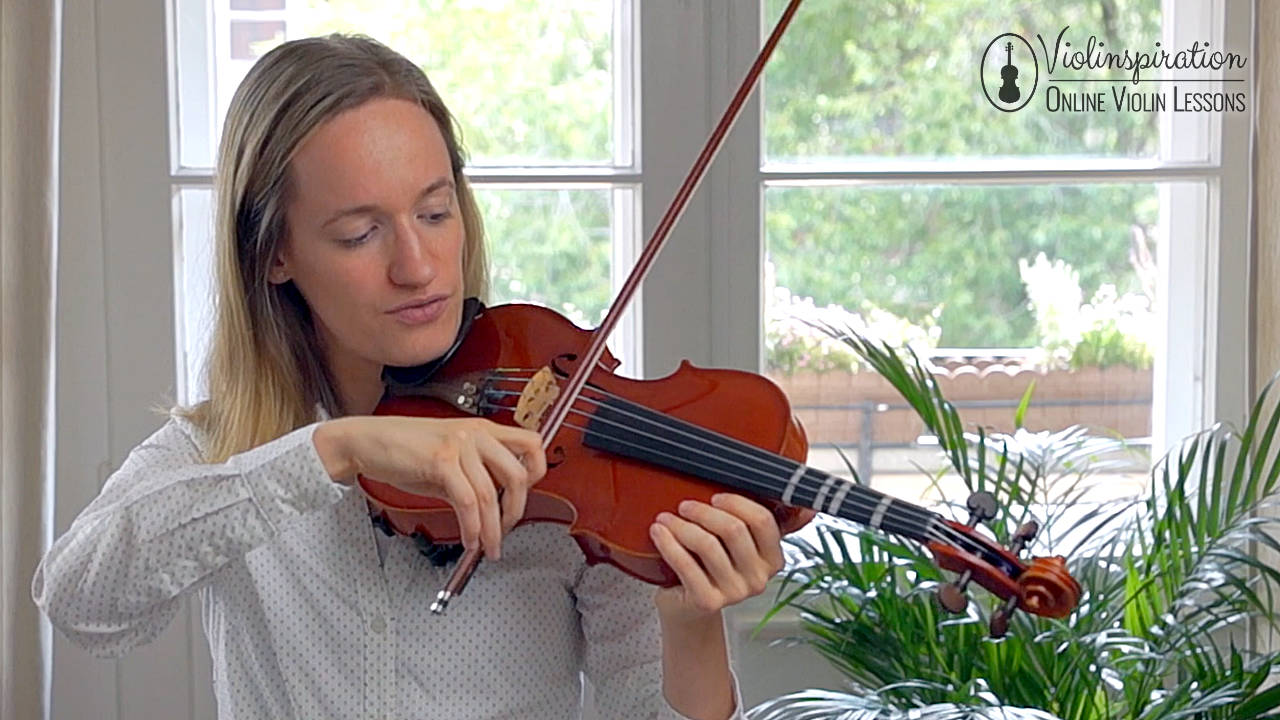
If your sound is not good, the first thing you should check is your bow pressure, as it is a common mistake to apply more pressure than needed, out of the fear that you’re not producing enough sound or because of uncertainty.
Relax your right hand and focus on producing a smooth sound and seamless transitions between a down bow and an up bow. However, be careful to apply enough pressure because too little will not provide full sound.
Check Your Right-Hand Grip
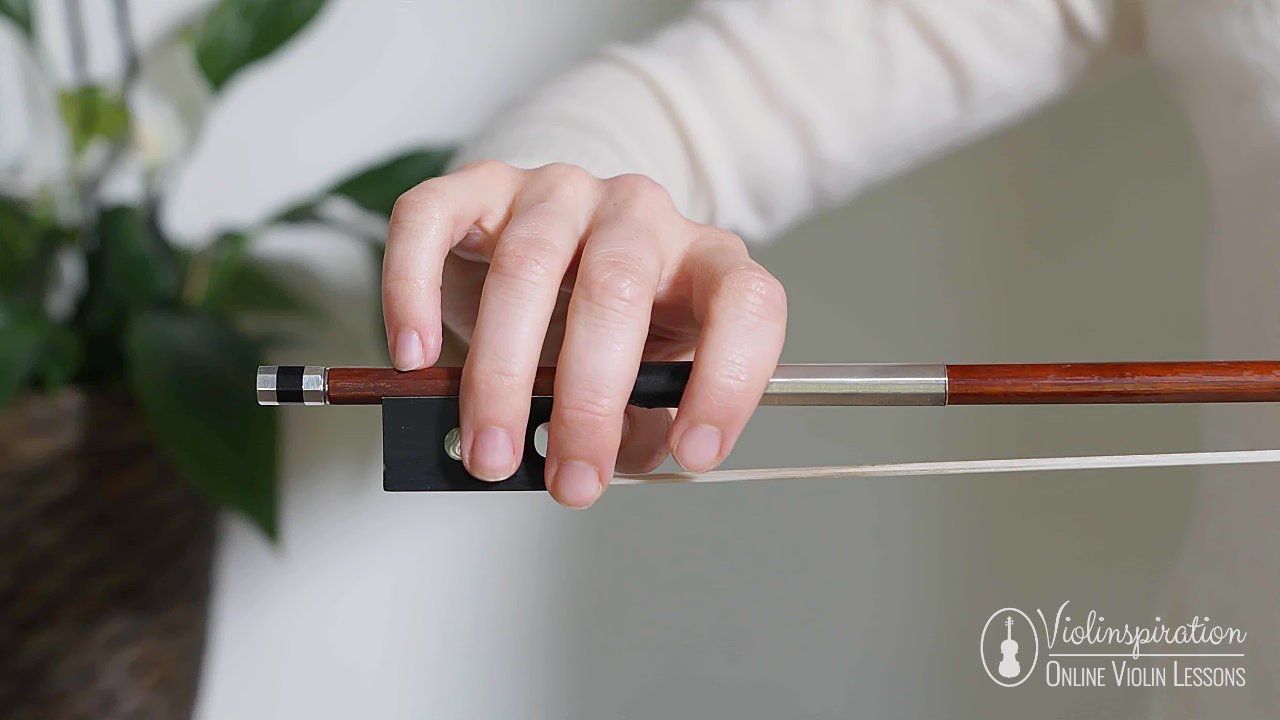
If your sound quality is lacking, check if your right hand is holding the bow the correct way:
- Place your thumb and pinky finger curved as shown in the picture above. These two fingers are the ones holding the bow.
- Let your index finger, middle finger, and ring finger rest on the stick with your distal phalanges (the last joint of your fingers).
For much more detailed instruction on how to hold the violin bow correctly, check this article: “How to Hold a Violin Bow: The 6 Steps to a Perfect Bow Hold.”
Keep Your Bow Straight
When playing, are you keeping your bow at an equal parallel distance from the bridge?
This might seem difficult for a beginner since it’s not easy from your viewpoint while playing to check if the bow is moving in a straight line. Sometimes it just looks straight from your perspective. As a matter of fact, from your point of view, the bow should look slightly tilted away from you. Of course, when you reach the tip or the frog, it will be clear if you were playing with a straight bow or not.
You can check it to be sure either by using a mirror, by having someone check for you, or by recording yourself. After some time, muscle memory will guide your bow to make straight strokes.
If you’d like to explore this topic more, make sure to read my guide to straight bowing.
Play on the Contact Point
We usually say that the bow should be “in the middle” between the bridge and the fingerboard. It’s not always exactly the middle but that’s how it’s described.
If you play too close to the fingerboard, your sound will be a bit softer and ethereal, and while playing close to the bridge, your sound will be raspy. When placing the bow in the middle, you’re getting the full tone.
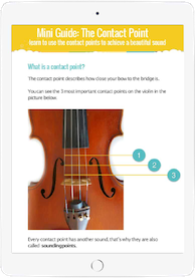
FREE Contact Point Guide
Improve Your Contact Points Technique
Adjust the Bow Speed
Bow speed and bow pressure work in association. Sometimes a slow bow with more pressure will make the bow seem almost unmovable and just create noises that only resemble notes. If, on the other hand, you apply very little pressure and your bow speed is high, the notes will be barely hearable. It will take a bit of experimentation on your part to get the tone you want in a particular piece.
Pay Attention to Left-Hand Pressure and Finger Position
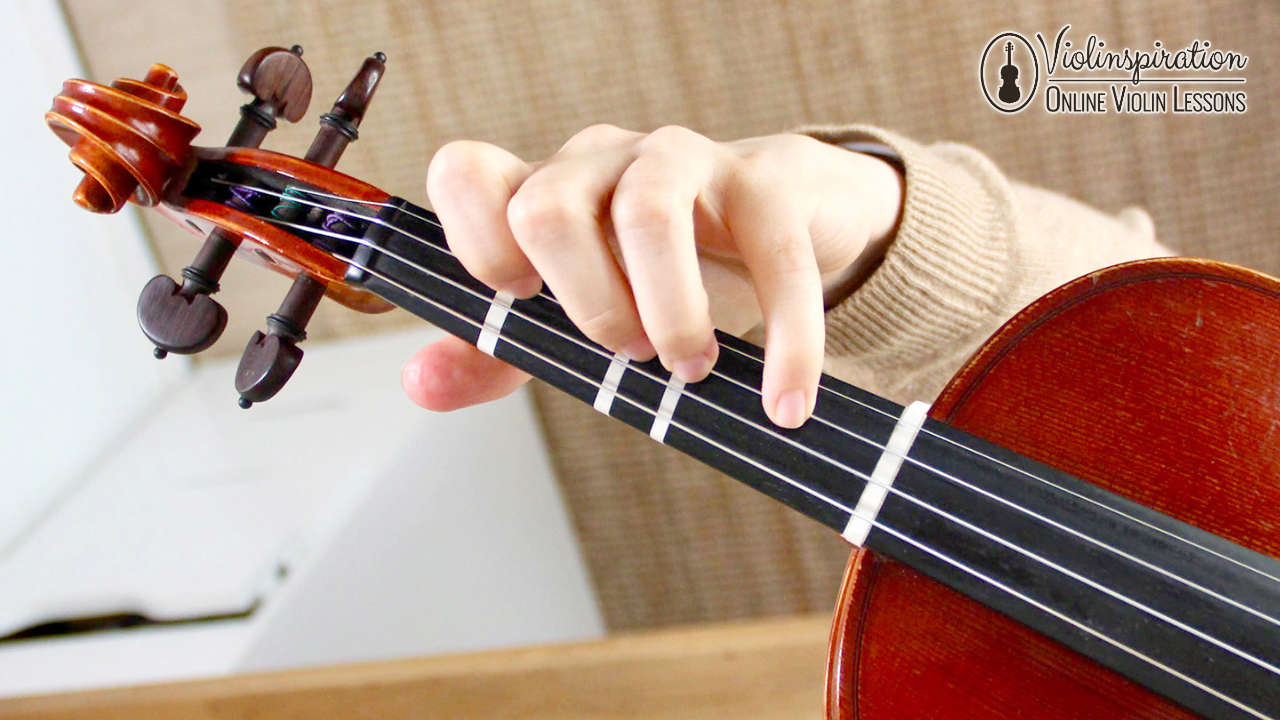
While your bow arm is the most responsible for your tone production, your left hand can help!
Sometimes the pressure applied on the left-hand fingers is too much or too little, or it might be that the fingers step between strings, and are generally misplaced. This may have some effect on your tone, so try to find the optimum level of pressure – enough, but not so much that your fingers start hurting. Be very precise about where you put your fingers on the fingerboard.
3 Essential Exercises to Get a Good Tone on the Violin
Is there something else you can do about your tone quality? you may ask. Well, here are a couple of simple exercises that will help you! Those can be used as simple warm-ups for beginners, and you can return to them whenever you feel that your sound needs improvement.
1. Focus on Elbow Movement
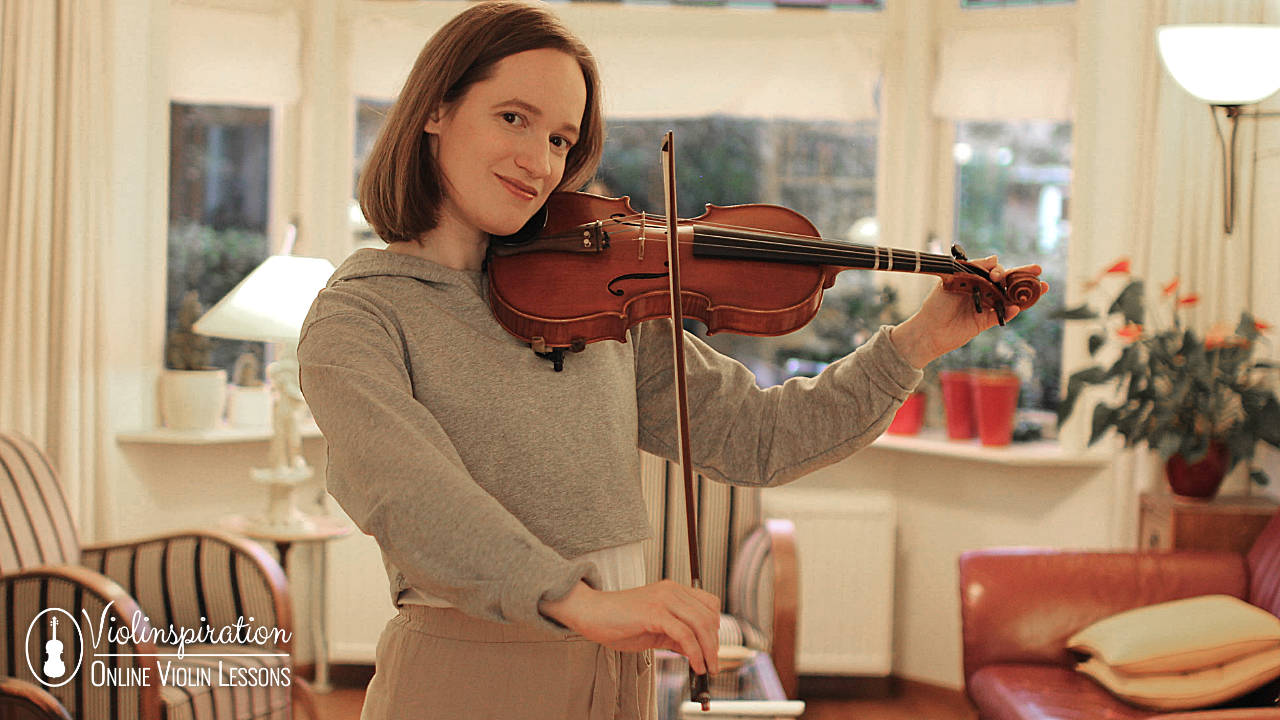
To be sure that you move your elbow and not your shoulder while bowing.
Stand against the wall and play a down bow. The movement of your upper arm should be stopped by the wall but you should be able to straighten your elbow to complete the down bow. This works better if you play the G string because your hand is elevated enough, and if you play the E string, it will be hard to hit the wall.
2. Practice Long Bow Strokes
Play open strings both down and up bow, trying to maintain the same sound for a given time using the entire length of the bow. Start with five seconds and increase the time as you get better. You should maintain the same volume and tone quality during the whole bow stroke.
It can be a challenging exercise, even for intermediate students, to pass the 30-second threshold but some of my students at Julia’s Violin Academy can go way beyond that. Currently, the record is 9 minutes 45 seconds! Can you do a longer bow stroke?
3. Practice Scales
By playing simple exercises such as scales, you prepare yourself for playing more complex melodies. You should play a scale without exerting yourself so you can keep practicing it within one octave or the first position only, and play the notes very slowly so to focus on the tone produced.
Aim for seamless bow changes, as this will also help you get better sound quality overall.
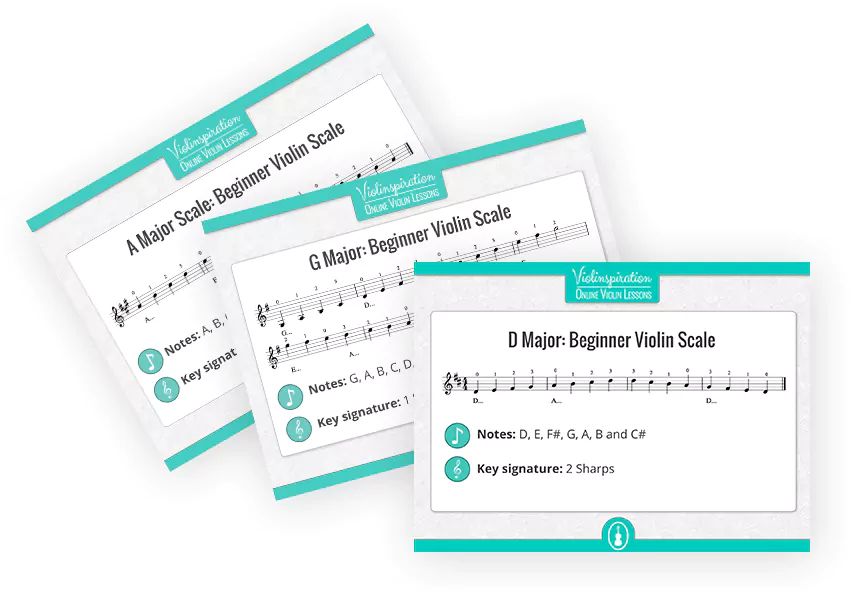
Free Download: 5 Most Common Violin Scales
for Beginners
Book Recommendations
Playing with a beautiful tone is not something where you learn it once and then move on – you should always work on your playing to get a better sound.
There are few books dedicated to improving tone. The two books listed below will definitely help you improve your bowing technique which means that they will also help you with your sound and tone production.
Otakar Ševčík – School of Bowing, Op. 2
I have suggested Ševčík many times in my blog posts for a good reason: his violin studies are great resources for educational purposes. In this book, you will find bow exercises and advanced bowing techniques that will help you develop your best tone.
Mastering these techniques will also help you learn a more advanced repertoire, so that’s a big plus!
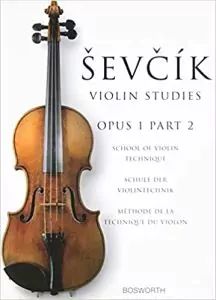
School of Violin Technique Op. 1
part 2 by Otakar Ševčík
Free Violin Sheet Music
Jan Hřímalý – Scale-studies for the Violin
A lovely book that includes scales played with different techniques and positions. It helps especially in the beginning, as it has different bowing techniques and dynamic changes, so it’s like an extension of the basic scale exercises.
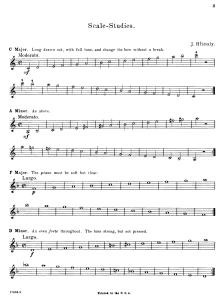
Scale-Studies for Violin by Jan Hřímalý
Free Violin Sheet Music
How Do I Make My Violin Sound Brighter?
There are a couple of tips that can help you improve your violin tone that have nothing to do with your technique but the quality of your instrument and its accessories. Sometimes beginner students don’t have a good violin because, understandably, they don’t want to spend much. Also, more often than not, a beginner violin doesn’t come with the best accessories, meaning strings, bridge, etc.
Here are some things which affect the violin tone quality, so keep them in mind as they can elevate your sound!
Use Enough But Not Too Much Rosin!
Beginner students will either use too much or too little rosin. If you use too much, it might create a raspy sound while if you use too little, it will create inconsistencies in the sound while playing.
Understandably, you might ask: how much is too much rosin? There’s not a fixed answer as it has a lot to do with the kind of bow hair and the type of rosin. But as a rule of thumb, if it leaves a lot of dust, it’s too much. Usually, covering the entire bow two or three times is enough.
Click here and watch a set of short videos, each with a different amount of rosin on the bow.
Also, you may consider using different rosin. Depending on the climate where you live, you may need one rosin for the summer months and a different one for the winter period.
Change Your Violin Strings
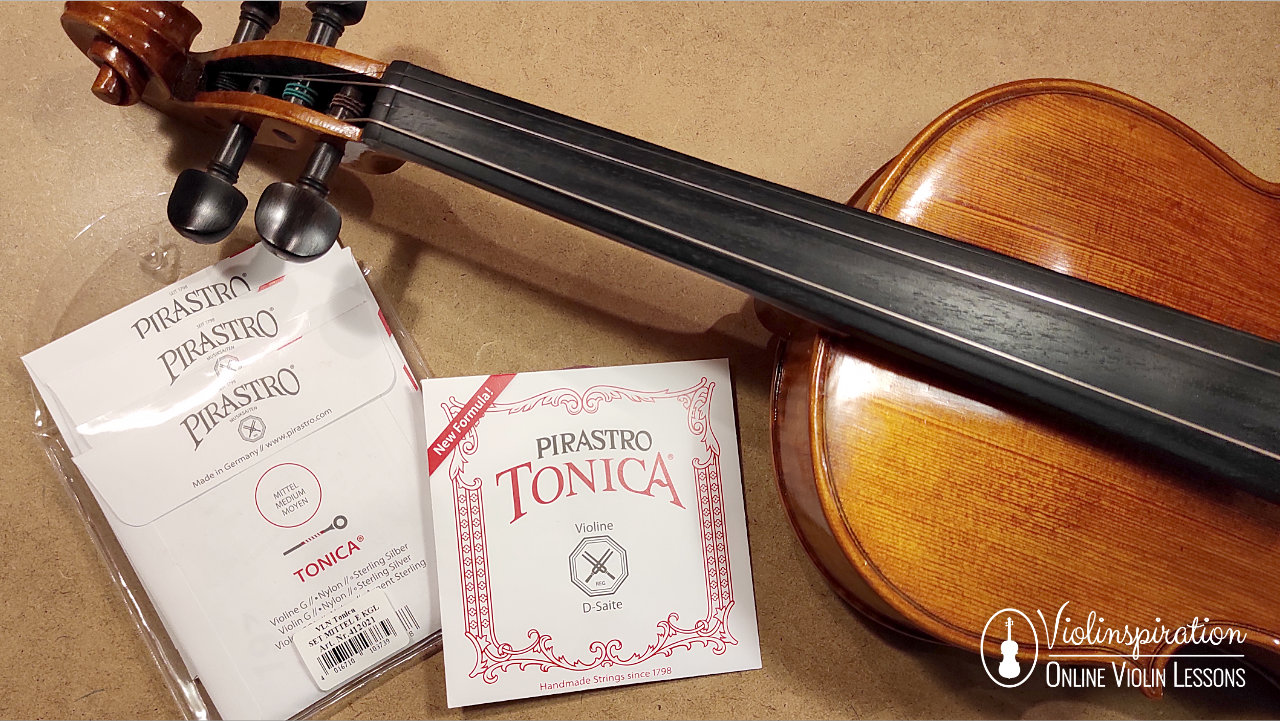
Beginner violins come with a set of strings already in place that is usually not of the best quality. The type and the quality of the strings play a very important role in your violin tone, and a string that is very old, regardless of quality, will generate a bad sound.
Consider changing your strings when it’s time to do so, or when you can spare some extra cash. Here’s an article that can help you choose the right strings as well as pick the right time to change them.
Make Sure the Bridge Position Is Correct
Sometimes the bridge might lean forward. This happens because when you tune the strings with the pegs, they drag it along. The bridge should be straight or leaning a little backward.

In this case, it would be best to ask a professional to position your bridge. Your role is to make sure that it always stays in this position.
Sometimes, beginner violins have a bridge that holds the strings higher than they should be. This needs a bit of trimming with sandpaper but avoid doing this before consulting a more experienced person. You can ask at a music store to help you or go directly to the luthier.
Also, buying a new bridge might make a significant difference to the sound of your violin. If your current bridge isn’t of good quality or is not properly adjusted to your violin, a new one will bring out the true tone color of your violin.
Soundpost Position
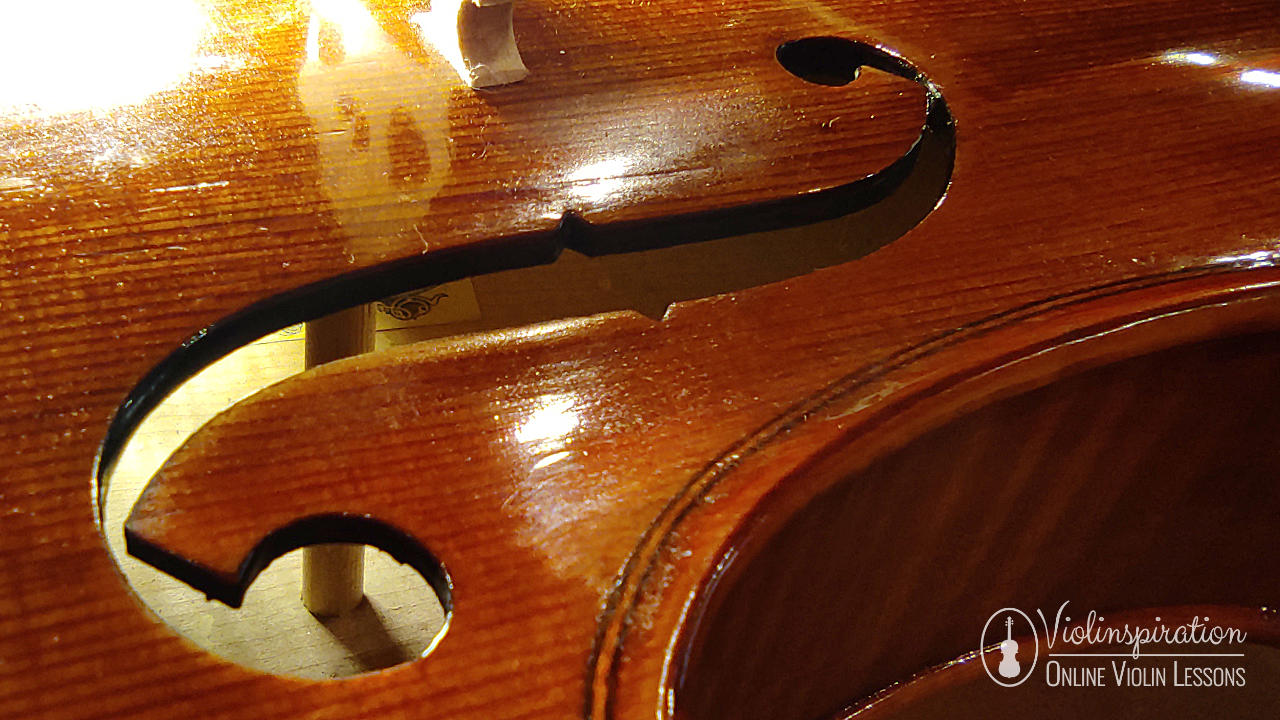
The soundpost is a tiny wooden dowel inside your violin. Its function is to hold the top plate of the violin in place and, along with the bass bar, to aid in the projection of sound from your instrument.
It makes a ton of difference to your sound as moving it can make the sound darker, brighter, or louder. But don’t try to move it by yourself – it’s quite tricky and it requires a special tool, so it would be best to ask a luthier about it. He or she will know the best position for it on your violin.
Tune Your Violin Properly
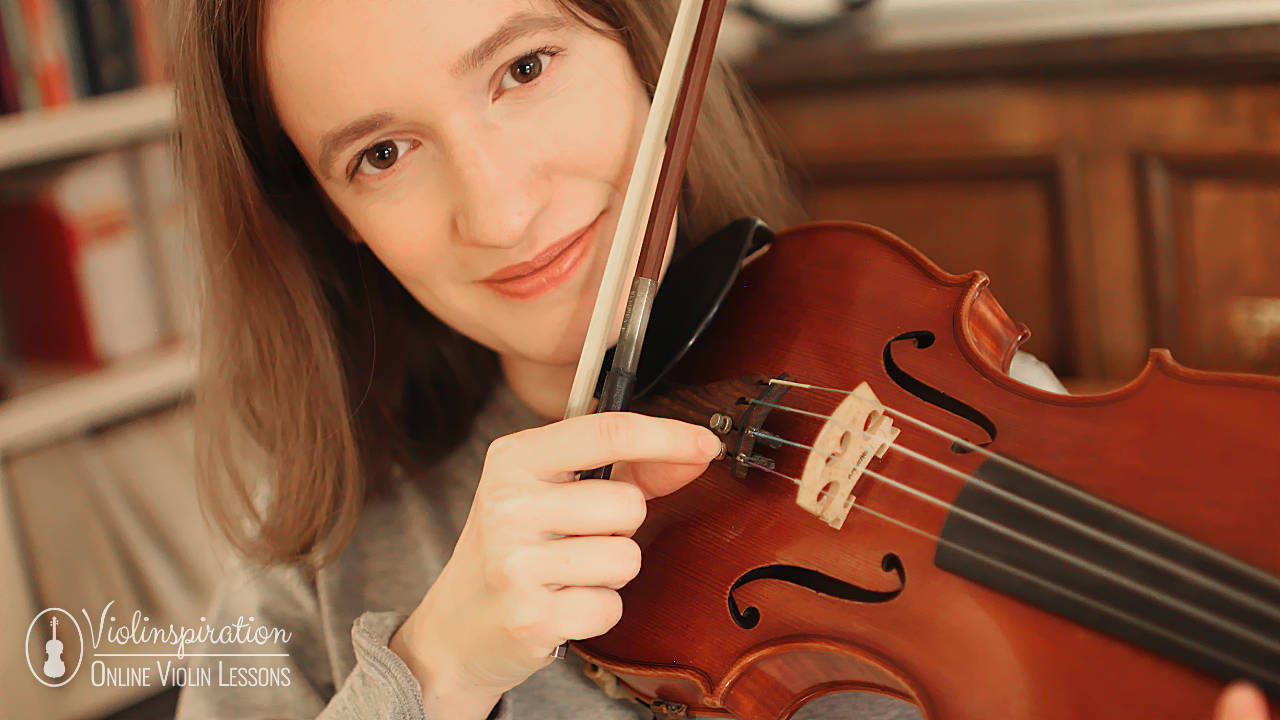
Tune properly and as needed. Always check that your violin is in tune before playing and check again when practicing for a longer time.
You can use different tuners – a stand-alone device, mobile app, or you can use my online tuner with tuning notes.
If you have changed strings recently, you’ll notice that new strings detune more quickly, so keep your eyes on that.
Tuning will not in itself help with the quality of the sound but playing in tune is an important aspect of a good violinist.
Upgrade Your Bow
A good bow costs significantly less than a good violin. If you spend enough but not too much, when buying your new violin, buying an extra bow of better quality might elevate your sound significantly.
The best option would be to go to a violin shop, state your budget, and ask them to show you the available or recommended bows. Play with all of them and decide which fits your sound and your hand better.
If there’s no violin shop nearby, make sure to have a look at my violin bow buying guide which gives reviews of several different bows.
Upgrade Your Violin
If you cannot get the best sound from your violin, maybe it’s time to change your instrument. If it’s too cheap (usually under $100) it is most likely not a good instrument. Or perhaps you’ve been playing for some time and you want to upgrade to something better.
Whatever the case, there will be a point where you’ll realize your violin is not helping you anymore. Here’s a guide that will help you choose the best violin for you.
Why Is My Violin Tone so Bad?
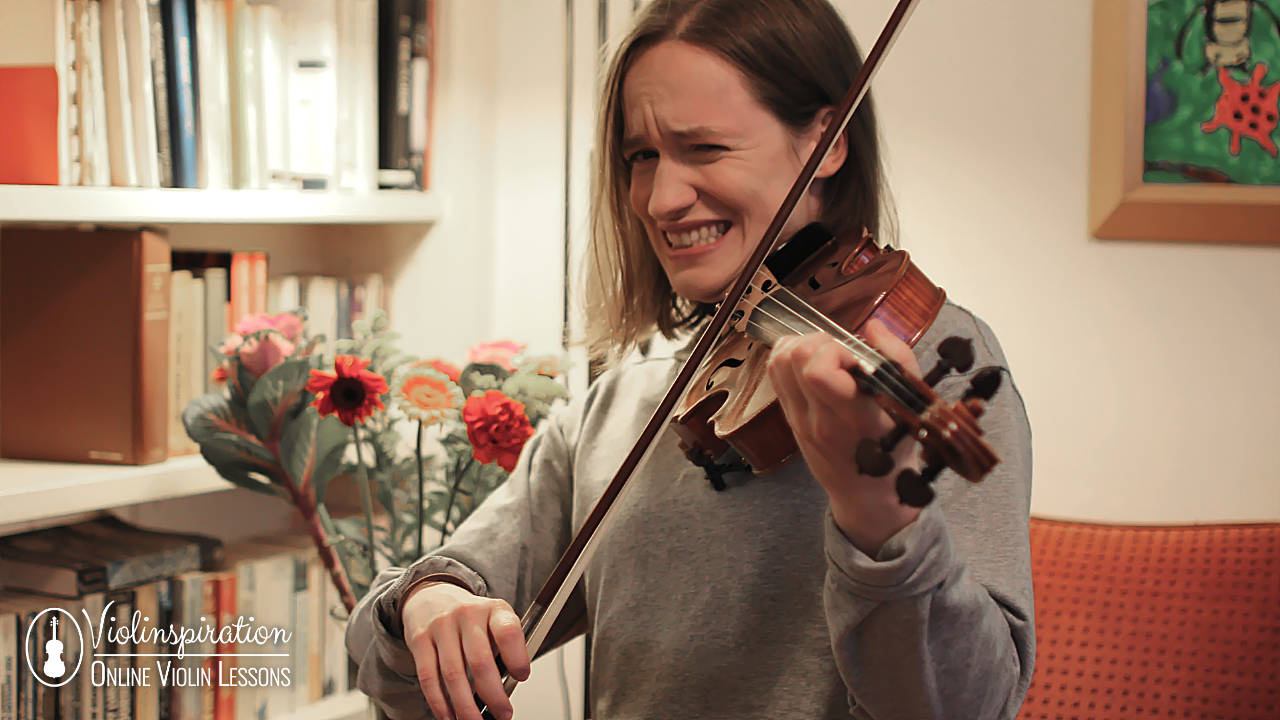
Here’s a list of all the things you can do to check why your violin tone is bad. This checklist will help you identify the problem easily:
- Do you hold the bow properly?
- Do you keep the bow straight while bowing?
- Do you play on the contact point (sounding point)?
- Do you adjust the bow pressure?
- Do you adjust the bow speed in relation to your bow hand pressure?
- Is your left hand in the right position?
If you’re doing all that and your violin tone is lacking, consider the following:
- Tune your violin
- Apply a bit more/less rosin or change your rosin
- Change your violin strings
- Check the bridge position
- Check the soundpost position
- Upgrade your bow
- Upgrade your violin
Final Note
Always be vigilant about everything I have covered in this post and if your tone isn’t what you want, stop and check everything that might have affected it.
Having good tonal quality is one thing but finding your own sound is another, which you should always strive for after learning how to get a good tone on the violin. I hope that this article has helped you learn what affects your violin tone and how you can improve it.
Last, but not least, playing scales will help you immensely, so make sure to download this free booklet and start practicing your scales today!

Free Download: 5 Most Common Violin Scales
for Beginners
























